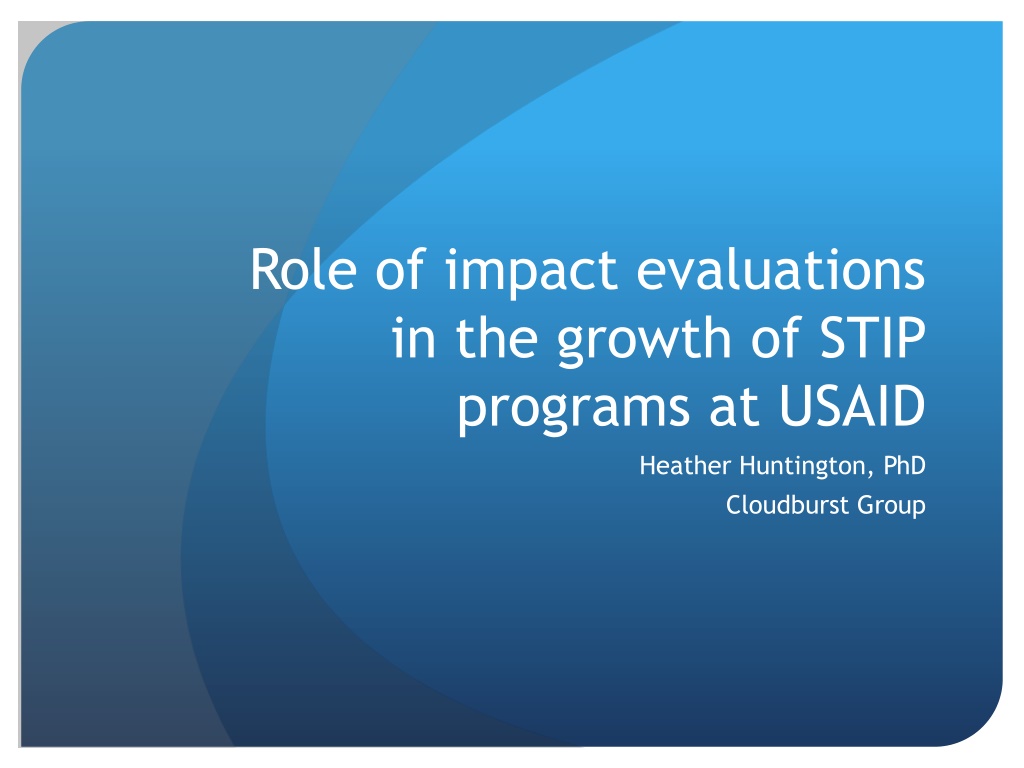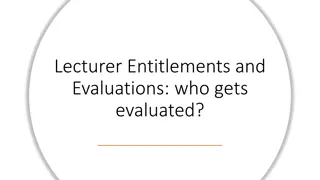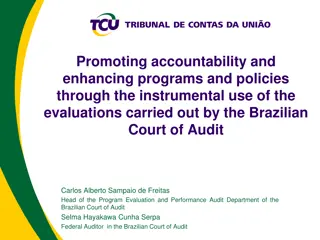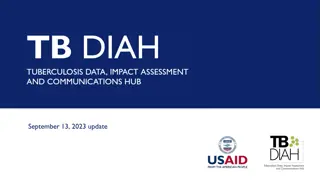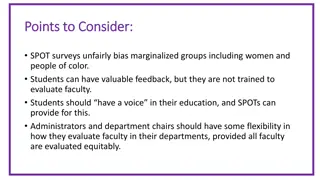Role of Impact Evaluations in STIP Programs at USAID
Impact evaluations play a crucial role in the growth and development of Science, Technology, Innovation, and Partnership (STIP) programs at USAID. Through evaluation practices, insights are gained, evidence is collected, and learning is enhanced to improve program effectiveness and impact across various sectors and missions.
Download Presentation

Please find below an Image/Link to download the presentation.
The content on the website is provided AS IS for your information and personal use only. It may not be sold, licensed, or shared on other websites without obtaining consent from the author.If you encounter any issues during the download, it is possible that the publisher has removed the file from their server.
You are allowed to download the files provided on this website for personal or commercial use, subject to the condition that they are used lawfully. All files are the property of their respective owners.
The content on the website is provided AS IS for your information and personal use only. It may not be sold, licensed, or shared on other websites without obtaining consent from the author.
E N D
Presentation Transcript
Role of impact evaluations in the growth of STIP programs at USAID Heather Huntington, PhD Cloudburst Group
Background Democracy, Human Rights and Governance Democracy Fellow (2012) USAID s DCHA/DRG Center Land Tenure and Natural Resource Management Task lead for evaluation portfolio (2014- present) USAID s E3/Land Office
Evaluations USAID Ethiopia: Pastoral rights certification programs (2) Ethiopia: Farmland rights certification program Ghana: Local governance and service delivery Guinea: Community land and artisanal diamond rights Liberia: Community land rights protection program Zambia: Agroforestry and land certification pilot Zambia: REDD+ pilot, global climate change
Role of IEs in growth of STIP Learning from IEs is still at a nascent stage at AID. Variation across sectors, Offices and Missions Current evaluation practices and results still do not provide compelling evidence of the impacts of many programs. There is still much work to be done on improving IEs and the learning from research and evaluation.
Early stage of building a learning agenda Justification for programming funds Policy requirement (USAID Evaluation Policy) Afterthought, separate box to check Example Mobile application technologies Offices/Missions vary in how much they are willing to invest in IEs Pressure/support from leadership USAID internal technical capacity and interest Dearth of evidence on potential impact of many interventions Too early for results to drive programming IEs required for pilots (Evaluation policy)
Need to improve R&E and data driven approaches Many programs (as designed) are not amenable to rigorous evaluations Not integrated into program design Christmas tree programs Low internal technical capacity Recruitment is difficult, talent turnover Coordination is critical - over reliance on contractors Not a norm Lack of Institutions, processes for effective R&E and building a sustainable learning agenda IEs are difficult, time-consuming and expensive Internal resistance and external (implementing partners) IEs can make programming more difficult and expensive
What has been accomplished? (8 years) IEs have become a more important part of USAID s portfolio of M&E USAID Policies Evaluation (2011), Research, Development Data Library Independent, 3rdparty evaluations Significant improvement in rigor, methods Growing R&E and data driven culture Greater leadership support Missions and Offices applying best practices, innovative and standardized methods Mobile data collection Geospatial integration Improved survey instruments
Continued Attempts to build internal capacity Improved knowledge, awareness and training Focused recruitment (AAAS, Democracy Fellows) and staff with research/evaluation background Learning from Baseline data collection Adapt interventions based on pre treatment data Sponsor research on baseline data Improve developing country capacity for R&E Emphasis on engaging local data collection partners
What further steps could be taken? (1) USAID does not have internal capacity to assess the impact and effectiveness of programs. Building USAID internal capacity is critical to developing (1) high quality evaluations and (2) a sustainable learning agenda regarding the impact of STIP programs. Managing rigorous impact evaluations and promoting an associated learning agenda is a significant time commitment requires: (a) very close coordination with technical and program staff, plus evaluation and implementation teams (b) deep understanding of programming and evaluation components -Need to take steps to recruit and retain staff with necessary background and skills and prioritize this role
Continued (2) Evaluation designs must be embedded in program designs at early stage of program development (3)Rebuild institutional learning capacity Lack of organizational mechanisms to integrate findings and learn from research Low capacity to absorb and disseminate the results of evaluations (4) Need continued support and incentives from senior leadership Continued skepticism of IE methods; they are seen as cumbersome, expensive and inflexible to programming
Resources https://www.usaid.gov/evaluation USAID Evaluation Policy (2011) Examples of learning integration (education, food security, policy updates, program design) USAID Evaluation 5 year report (2016) National Academies Report (2008) - Improving Democracy Assistance: Building Knowledge Through Evaluations and Research (http://pdf.usaid.gov/pdf_docs/Pnadl231.pdf) www.usaidlandtenure.net E3/Land Office evaluation and impact site
